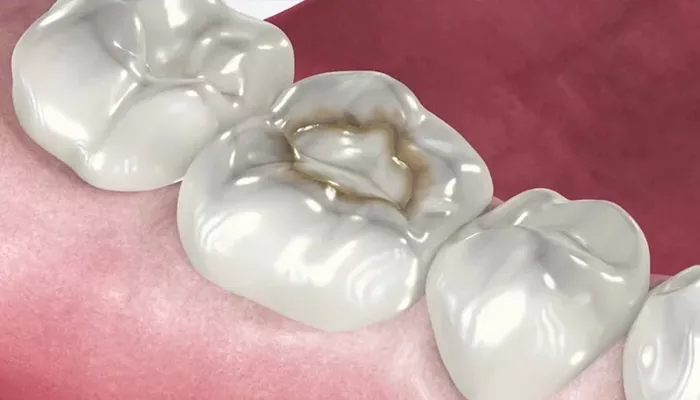Tooth decay is a common dental issue that affects many individuals. When a tooth becomes decayed, it often requires a filling to restore its function and appearance. This article will explore what tooth decay fillings look like, the different types available, and how they can impact your dental health.
What Are Dental Fillings?
Dental fillings are materials used to fill cavities or holes in teeth caused by decay. The process involves removing the decayed part of the tooth and filling it with a suitable material. This not only restores the tooth’s shape but also prevents further decay. Fillings can be made from various materials, each with unique properties and appearances.
Types of Dental Fillings
There are several types of dental fillings available, each differing in appearance, durability, and cost. The most common types include:
1. Amalgam Fillings
Appearance: Amalgam fillings are metallic and silver in color, making them easily recognizable. They are composed of a mixture of metals, including silver, mercury, tin, and copper.
Durability: These fillings are known for their strength and longevity, often lasting over ten years.
Use: Amalgam is typically used for back teeth where chewing pressure is greatest due to its durability.
2. Composite Fillings
Appearance: Composite fillings are made from a resin material that can be tinted to match the color of your natural teeth.
This makes them an aesthetic choice for visible areas.
Durability: While they provide a natural look, composite fillings may not last as long as amalgam fillings, generally requiring replacement every five to ten years.
Use: They are often used for front teeth or areas that require a more discreet appearance.
3. Ceramic Fillings
Appearance: Ceramic fillings are made from porcelain and can be custom-colored to match your teeth closely.
Durability: These fillings are durable and resistant to staining but tend to be more brittle than other materials.
Use: Ceramic fillings are ideal for visible areas due to their natural appearance but can be more expensive.
4. Glass Ionomer Fillings
Appearance: Glass ionomer fillings have a translucent appearance and can blend well with natural teeth but may not match as closely as composite or ceramic options.
Durability: They are less durable than other types and typically last around five years.
Use: Often used in children’s teeth or areas not subject to heavy chewing pressure, they also release fluoride to help prevent further decay.
5. Gold Fillings
Appearance: Gold fillings have a distinct yellow color and are highly durable.
Durability: They can last over 20 years but are among the most expensive options available.
Use: Gold is often used in back teeth due to its strength but is less commonly chosen for aesthetic reasons.
Visual Characteristics of Fillings
After a filling is placed, the tooth should appear smooth and restored.
Here’s what you can expect visually from different types of fillings:
Amalgam Fillings: These will stand out due to their metallic color and may be visible when you smile.
Composite Fillings: These should blend seamlessly with your natural tooth color, making them nearly invisible.
Ceramic Fillings: Similar to composite fillings, they offer a natural look but may have a slightly glossy finish.
Glass Ionomer Fillings: These have a matte finish and may appear slightly translucent.
Gold Fillings: Their metallic shine makes them noticeable, often seen as an indicator of quality dental work.
Signs of Decaying Dental Fillings
Over time, dental fillings can deteriorate or fail. Here are some signs that your filling may be decaying:
Sensitivity to Temperature: Increased sensitivity when consuming hot or cold foods can indicate that the filling is compromised.
Pain When Biting Down: If you experience discomfort while chewing, it could mean that the filling has become loose or cracked.
Visible Damage: Cracks or chips in the filling itself are clear indicators that it needs attention.
Staining Around the Filling: Dark spots or discoloration around the filling may suggest decay is occurring beneath it.
Importance of Regular Dental Check-ups
Regular dental visits are crucial for maintaining oral health and ensuring that any issues with fillings are addressed promptly. Dentists can identify early signs of decay around fillings and recommend appropriate treatments before more extensive damage occurs.
Conclusion
Tooth decay fillings play an essential role in restoring damaged teeth. Understanding what these fillings look like and the different types available can help you make informed decisions about your dental care. Regular check-ups with your dentist will ensure that your fillings remain in good condition and that your overall oral health is maintained. By paying attention to the signs of decaying fillings and seeking timely treatment, you can protect your smile for years to come.
In summary, whether you opt for amalgam, composite, ceramic, glass ionomer,or gold fillings, each type has its own advantages and visual characteristics. Your choice will depend on factors such as location in the mouth, aesthetic preferences, durability needs, and budget considerations. By staying informed about your options and maintaining good oral hygiene practices, you can enjoy a healthy smile free from decay.

